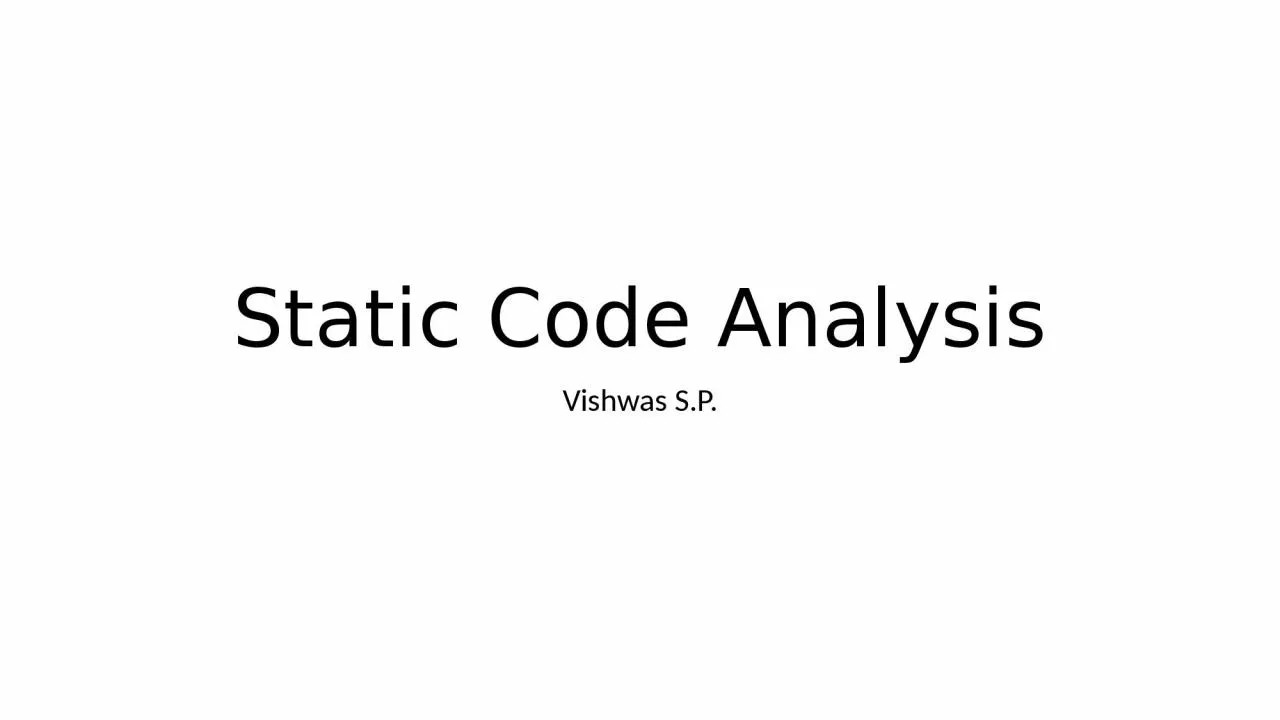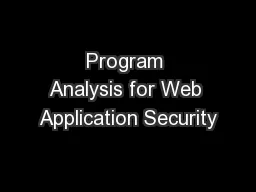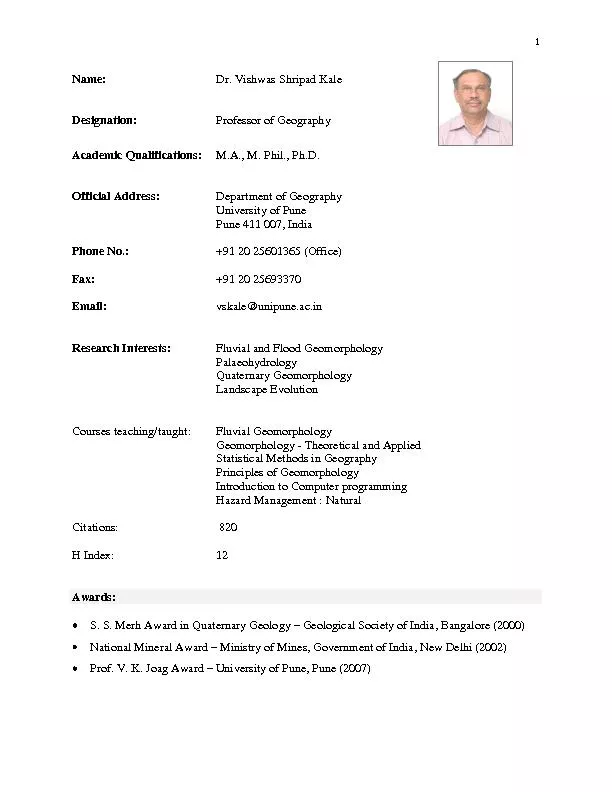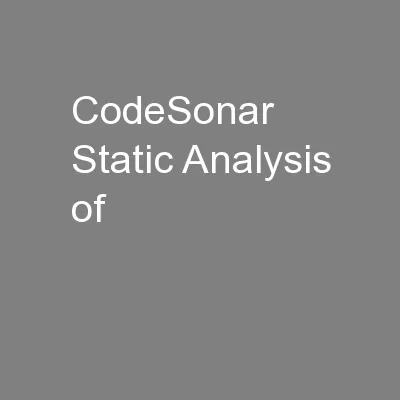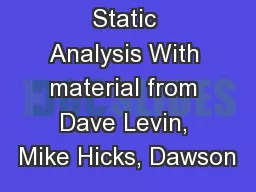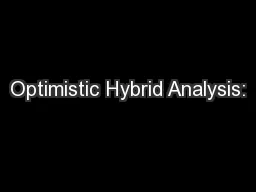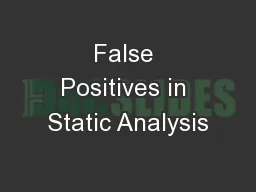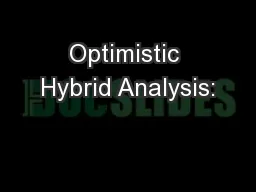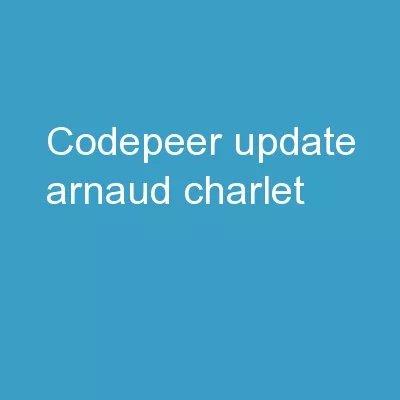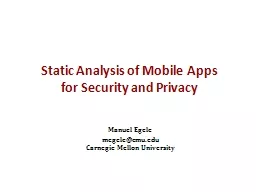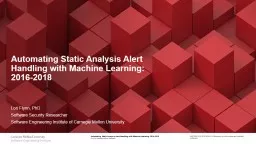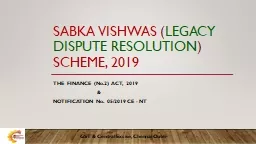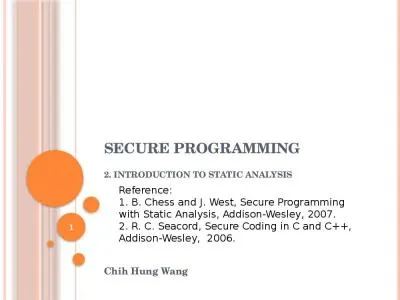PPT-Static Code Analysis Vishwas S.P.
Author : williams | Published Date : 2024-03-13
Overview Static Code Analysis also known as Source Code Analysis is usually performed as part of a Code Review also known as whitebox testing and is carried out
Presentation Embed Code
Download Presentation
Download Presentation The PPT/PDF document "Static Code Analysis Vishwas S.P." is the property of its rightful owner. Permission is granted to download and print the materials on this website for personal, non-commercial use only, and to display it on your personal computer provided you do not modify the materials and that you retain all copyright notices contained in the materials. By downloading content from our website, you accept the terms of this agreement.
Static Code Analysis Vishwas S.P.: Transcript
Download Rules Of Document
"Static Code Analysis Vishwas S.P."The content belongs to its owner. You may download and print it for personal use, without modification, and keep all copyright notices. By downloading, you agree to these terms.
Related Documents

